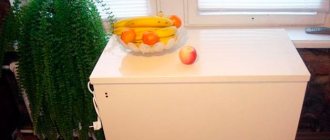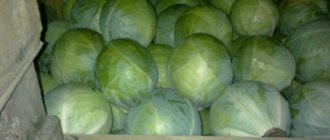Despite the general tendency to use a balcony or loggia as an office, lounge area or small apartment garden, many of their owners refuse such bold ideas for one reason: lack of space for storing seasonal items and supplies. Whatever one may say, placing a bag of potatoes or winter skis compactly in a small hallway or kitchen is problematic.
But this does not mean that the storage balcony should look cluttered and old. Let's talk about how to organize storage space on the balcony, how to properly arrange various vegetables in boxes, and also not forget about the aesthetic component of the renovation.
How to make a canning rack with your own hands
What we have: a typical city balcony, glazed, insulated and renovated
Our goal: to independently make a simple but convenient wooden rack for storing homemade preparations or other products (fresh vegetables, fruits, cereals, etc.).
Neat shelving with comfortable wide shelves
So, for the work you will need a tool for working with wood (plane, saw or jigsaw, chisel, sandpaper), a marking tool (construction tape, level, marker, square), a drill for installing dowels in the wall, and a screwdriver. We will use wooden blocks and boards purchased at the supermarket as the main building material.
Having prepared the tools and materials, we proceed according to the following plan:
- We measure the height of the room, determine the dimensions of the shelves, and mark the places where the bars are attached to the wall, floor and ceiling.
- We measure and saw off the bars (for the frame) and boards (for the shelves) to the given dimensions.
- We process all wooden parts with sandpaper and, if necessary, cover them with protective impregnation with an antiseptic.
- We mount the frame: first we install four long bars vertically, securing them with dowels, then we attach crossbars to them with self-tapping screws, on which the shelves will be supported.
- We install shelves using boards adjusted to size.
We pay attention to the reliability of the elements fixed on the wall
After finishing the work, the finished rack can be painted in any suitable color. It is better to use acrylic paint: it fits perfectly on wood, dries quickly, does not smell and is absolutely safe.
The open part of the double-glazed window can be covered with a curtain, but it is better to make the adjacent wall of the cabinet blank
With such a rack, you won’t have to rack your brains over how to store canned food on the balcony in winter - the jars will stand in orderly rows in one place. And to prevent the sun's rays from spoiling the results of your work, containers can be placed in plastic boxes with lids or the rack can be equipped with a convenient system of horizontal blinds.
Closed cabinets
The most common option for storing supplies is closed cabinets.
Design options for closed cabinets:
- A closed double-leaf vertical cabinet near one of the walls - if possible, order a closed cabinet made to individual sizes made of wood or chipboard. A plasterboard cabinet with a metal profile is also not bad. But it loses to wooden cabinets in terms of load-bearing capacity. Such furniture looks aesthetically pleasing and does not take up much space, as it seems at first glance. The main thing is to calculate the depth and height of the storage shelves.
- Drawers are closed - you can cover the drawers with a board on top or place them under a bench, lay a mattress or place pillows - you will get a great place to relax. It is better to place such boxes on a rail system. A low chest of drawers with deep drawers will also fit into the interior.
- Built-in cabinet - inside there are shelves according to the size of the cans, outside there are stylish doors on a roller or rail mechanism. The only drawback of this design is that it cannot be rearranged.
- Hinged lockers along the perimeter of the balcony are a budget analogue of built-in lockers on a rail mechanism. The tabletop on top can be used as a place to grow seedlings or flowers.
We do it ourselves
Many home craftsmen are interested in how to make a cellar on the balcony. Before starting work, the floor should be insulated. For this, foam sheets, polystyrene or mineral wool slabs are suitable. The top is covered with fiberboard, chipboard, thin board or plywood.
When the base of the balcony floor is prepared, the construction of the thermal container begins.
- sheet of chipboard or plywood;
- wooden slats and bars;
- insulation material;
- temperature regulating sensor;
- two 20 W lamps;
- cables;
- glue;
- tools - electric drill, hammer and nails.
- We build a box or box from boards or chipboard. We attach bars to the floor that will serve as the base. Vertical strut strips will be screwed to them, and rectangular frames will be installed.
- Using plywood and chipboard we make a box for the balcony (the distance between the double walls is about 10 cm). We put a heat insulator there.
- Inside the box we arrange shelves made of plywood and slats, and insulate the lid of the thermal container. The box needs holes for the wires.
- The plywood latch should move along the guides along the box lid. You need to make several holes in it (their diameter is 5 cm). The damper regulates the temperature by its movement.
- The heating function is performed by light bulbs. You can install a thermostat and thermometer inside the box to record the temperature. If electricity is needed, you need to connect the outlet to the balcony.
The thermal cellar is ready. The main disadvantage of such a homemade box is its susceptibility to moisture, and, as a result, the formation of mold and mildew. There is a risk of fire if the rules for installing heating elements are violated.
The result is a design that resembles a thermos - double walls with insulation between them. The lid of the box also needs to be made double and insulated with mineral wool, sawdust, thermal insulation made of foam plastic is suitable.
The thickness of the layer determines the reliability of protection of vegetables. This model without electricity for a balcony is suitable for regions with mild winters and well-insulated balconies.
If you don’t have enough time to make a balcony box yourself, you can buy a factory-made version.
There is a special prospect for ground floor apartments. Their residents don’t have to think about how to make a cellar on the balcony. They have a chance to build underground storage for canned food and vegetables. But the labor costs here are considerable.
- undergo approval and obtain an expert opinion that the construction of the cellar is safe for the building;
- cut a round or square hole in the balcony slab for the hatch, remove part of the concrete slab underneath, and remove a lot of soil;
- place a sand cushion under the screed, and then perform the screed itself;
- build side walls of brick, lay insulation, waterproofing material and install a ventilation pipe going outside;
- make the box itself, a staircase leading to the cellar and equip a hatch (sliding or folding), as well as lighting. Installing shelves is a matter of course.
The financial costs will also be significant, but a large family is interested in such a balcony subfloor, and the costs will pay off in a few years.
Homemade box
The cost of a finished cellar is not always commensurate with the volume of vegetables stored in it. A box made by yourself will significantly save money, and during operation it is not inferior to a factory one.
To make a box you will need: chipboard, boards or thick plywood, insulation, thermometer, glass, incandescent light bulbs, wires, canopies, glue, nails.
The cellar is a heated box for vegetables, located inside an insulated box and separated from it by slats to create an air gap.
To make the box you will need:
- wooden slats, timber;
- Chipboard, boards or thick plywood;
- insulation (foam plastic, sawdust, mattress);
- thermometer;
- glass;
- incandescent light bulbs 40-50-75 W;
- wires;
- awnings;
- glue;
- nails.
Assembling a vegetable thermal container
Having prepared all the necessary components, you can begin assembly. It is performed in several stages. The algorithm is like this:
- If the product is supposed to be “mobile”, then the frame of the box is assembled from bars. They can be attached to each other using metal corners.
- The bottom needs to be raised above the floor of the balcony, so two bars are attached to it, closer to the middle, which will not only provide an air cushion, but also impart rigidity to the structure.
- Insulation is being installed. It is cut to sizes that correspond to the perimeter of the planes between the beams. The insulation should be as thick as the size of the block. To ensure that there are no gaps for cold between the bars and the insulation, the resulting gaps are filled with polyurethane foam.
- Thin plywood is fixed at the bottom to cover the insulation.
- One of the pre-prepared heating devices is placed on top of it. Due to its small thickness and safety in operation, infrared film is optimal for the box.
- They also form a “warm pillow” with the help of light bulbs, but in this case the volume of the box is reduced, since an additional lattice bottom must be installed on top of them.
- After this, it would be good to line all internal planes with polyethylene foam, preferably foil-coated.
- If a light bulb is used for heating, the lattice bottom is not covered with polyethylene.
- The gap between the box frame and the lid, on the side where the hinges are supposed to be installed, should also be covered with elastic foil polyethylene foam. After installing the cover, the strip of insulation material is secured with staples to both the cover and the box.
This completes the process of assembling the heating cabinet. Now you can only modify it to suit specific conditions and needs.
For temporary "overexposure"
From scrap wood (an old door, scraps of slats, pieces of plywood and fiberboard) you can make a regular box and container with heat-insulating walls. I will describe each storage method separately.
Regular box
We built a box from bars, linoleum, foam plastic, slats, pieces of plywood, see how to make such a box.
Instructions:
- We assembled a frame from a bar measuring 60x60 - 4 pieces.
- We connected the parts with nails.
- The slats were cut with a hacksaw 60 cm long - 24 pcs.
- We attached them to the sides with a gap of 1-2 cm for ventilation.
- For the bottom and lid, we cut out a 60x60 square from plywood - 2 pcs.
- We cut out a 55x55 cm piece of linoleum.
- We put linoleum inside on the bottom.
Friends, the box is ready, all that remains is to prepare the covering material (an old blanket) in case of frost. Closer to the cold weather, I will place pieces of foam plastic against the street wall touching the box. An ordinary box will store potatoes on a closed and glazed balcony.
Watch the video instructions for assembling the box.
No storage space? Learn how to freeze potatoes at home for the winter.
Thermally insulated box
Dear readers, a long shelf life is guaranteed by a box with thermal insulation and a heat regulator. This place is ideal for all types of balconies and preserves potatoes until spring when the temperature drops to -20.
I will describe how to put it together yourself and what to buy to make the box.
Main types of boxes and recommendations on how to make them yourself
What is most often stored on the balcony for vegetables? Of course, potatoes, carrots, onions. A little less cabbage and beets. The optimal temperature suitable for keeping these types of vegetables fresh is +5-10 degrees. If your apartment has a heated balcony, you can easily use a regular ventilated box for vegetables, making it yourself.
Standard vegetable storage box
A ventilated cellar on a heated loggia can be made independent or the loggia wall can be used as one of its walls.
This is interesting: A simple storage chest can be built both before and after finishing the loggia. The first option involves further disguising the vegetable cabinet as the main decoration of the room. The box can be lined with plastic or decorated with wallpaper.
In order to make a ventilated cellar on the balcony with your own hands, you will need eight bars from which the frame will be constructed (if the box is planned to be sewn to the wall of the loggia, six bars will be needed). Four cross slats will also be needed. You can connect the square frame of the vegetable storage using nails or self-tapping screws. To strengthen the structure, you can use metal fasteners in the form of corners.
Such a cellar can be lined with scraps of clapboard or narrow boards or even plastic panels. The main thing is to make small gaps between the boards, about 0.4-0.5 mm. This way you will ensure ventilation of the vegetables.
Cellar on the balcony without electricity
There is no need to make a lid for such a cellar. If you need it for aesthetics, then it can be made from a frame made of beams and sheathed on top with plastic or plywood or clapboard.
A box for storing root vegetables on the balcony is decorated with clapboard
Do-it-yourself cellar-thermal box on the balcony
If your balcony is poorly heated in winter, then you will not be able to store vegetables in a regular ventilated cellar. The ideal way out of this situation is to organize a thermal cellar for the balcony with your own hands.
Making such a cellar is almost as simple as making a ventilated box. To organize a thermal container, you will need a tight sealed box, which you can make yourself. The frame of a thermal cellar for vegetables is made according to the same principle as the base of a ventilated box. Next, it is sheathed with dense material, such as plywood, chipboard or thick plastic. All seams and cracks are sealed with silicone.
After this, polystyrene foam is installed in the finished vegetable box on the balcony. Dense slabs of this material are sawn with a hacksaw and then inserted inside the box along all four walls. They are attached to the frame using glue or plastic dowels
Particular attention must be paid to the tight fit of the foam plates to each other, otherwise the thermal effect will not work
Separately, it should be said about the lid of the home cellar on the balcony. For such a box it is an integral part of the design. The lid must be made airtight and also covered with foam plastic.
Important to know: The size of the cellar on the balcony depends primarily on your preferences. You should choose them depending on how many vegetables you plan to store in the box
You can make a structure the length of the entire wall of a small loggia or place it compactly in a corner.
Fastening polystyrene foam into a thermal container box
Electric cellar on the balcony
If your balcony is not heated at all, you can make an electric vegetable storage facility on the balcony with your own hands. To do this, you should make an insulated cellar using the method described above and be sure to provide it with a sealed lid.
After this, you can begin organizing electric heating for the mini cellar on the balcony. In order to provide the required amount of heat to root vegetables, two standard light bulbs with a power of 40-60 watts will be sufficient. They can be installed in the box in two ways. The first involves installing a metal pipe in the middle of the cellar, inside of which light bulbs will be located. Remember that you should only engage in this process if you understand electricity, since the current is dangerous to life.
You can also create a cellar on the balcony by installing light bulbs in the lid or side wall of the container. Remember that these lighting elements provide direct light. How to preserve potatoes in this case, because they turn green when in direct contact with sunlight or electric light. To do this, you need to cover the light bulbs with a metal screen.
External view of the electrical box. For convenience, it has sockets
When is additional heating needed?
When installing a vegetable box on a cold (uninsulated) balcony, where the air temperature in winter drops below -5 °C, it would be a good idea to take care of additional heating of the container. As an option, you can use film heated floors.
Algorithm of actions:
- Cut out a piece of film flooring in places specially marked by the manufacturer, identical in size to the bottom of the storage box.
- Place a film covering on the bottom of the box, connect it to the thermostat built into the outside of the box.
- Connect the heated floor to the network.
Installing a heated floor will not raise any questions if you carefully read the film coating manufacturer’s instructions before starting work.
Manufacturing a universal version of furniture
The simplest model is a rectangular chest with a lid. To assemble a box for a balcony with your own hands, you will need bars for making a frame and sheet covering material: chipboard, plywood, OSB.
If there are no construction skills, then it is advisable to use old wooden boxes or used furniture for the frame. Chests of drawers, tables, bedside tables are suitable. In this case, you will only have to cover the frame with sheets of plywood, attach a lid and back, and decorate it with sofa cushions.
Required tools:
- drill;
- ruler, angle, pencil;
- tape measure, level;
- plane;
- fasteners;
- hammer;
- grinder;
- jigsaw
This list may vary depending on the type of finishing material, design, and additional elements. You may need paint, varnish, leatherette, fabric, or printed material.
How to make a box on the balcony with your own hands:
Take measurements of the free space of the room. Determine the dimensions of the planned piece of furniture
It is important to combine ease of use and spaciousness of the design. It is advisable to make sketches with dimensions. Install the frame
You need to start from the floor. Lay and secure four timbers for the base of the structure. Then install the posts and build the upper part of the frame. Make a base for the lid from the bars. Cover the bottom of the box with boards. If the model is not insulated, then small gaps can be left between the boards to ventilate the interior space. This will protect supplies from excess moisture. For an insulated box, the bottom is made solid, and a sheet of foam plastic is placed underneath. Attach sheets of lining material to the walls of the box. Install one or more partitions to divide the space into compartments. Cover the base of the lid. The width of the product is usually no more than 70 and less than 40 cm, otherwise it will be uncomfortable to sit on. The optimal height of the box does not exceed 60 cm. Attach a piano hinge of the required size to the end side of the lid. Then put the top part on hinges or make a removable lid.
It is advisable to open the finished product with varnish or paint, and make a soft seat on the lid. It can be used as a couch or sofa. Fabrics or leatherettes for upholstery should be chosen to match the color scheme of the loggia.
Attention! If you decorate a balcony in a loft style, then sitting on a sofa made of hand-sewn pillows will look very impressive. This option is simpler and more functional
The pillows can be washed and used for other purposes.
Choosing a household balcony heating cabinet
A hanging container (a thermal box or a thermal cabinet that has a thermostat), invented by compatriots, is used in unheated rooms for seasonal storage of canned vegetables, root vegetables, and individual large fruits and vegetables.
To maintain the desired temperature, an electric heater is used, which is located around the entire structure; there is also a thermally insulated housing with an air gap.
Today, many manufacturers offer thermal containers with different technical characteristics, which can be selected depending on preference.
Balcony heating cabinets for preserving agricultural products are mainly produced in Russia. Thermal cabinets allow you to maintain the required climate inside at extremely low temperatures.
The most common models of heating cabinets:
- The winter heating cabinet model TBPZ-140 has dimensions of 60x50x80 cm. Stores food with outdoor temperatures from -35 ˚С to +5 ˚С. The temperature adjustment inside the oven varies from 2 ˚С to 10 ˚С. It is used seasonally, in the cold season, as it only works for heating. Winter models of the heating cabinet can have a capacity of 105 l, 145 l, 185 l, 245 l, 300 l, 365 l.
- The year-round heating cabinet model TBPK-240 has dimensions of 1000x500x850 mm. The temperature control inside the oven varies from 2 ˚С to 10 ˚С, regardless of the time of year, as it has a heating mode and a cooling mode (refrigerator). Operates at -30 ˚С to +35 ˚С. Year-round heating cabinets can have a capacity of 145 l, 185 l, 305 l, 245 l.
- The year-round vertical heating cabinet, manufactured by Predictor in Novosibirsk, has dimensions of 120x85x50 cm. The inside of the heating cabinet is lined with galvanized steel. The heating cabinet is equipped with a temperature regulator, with mode stabilization up to +2 ˚С at ambient air temperatures ranging from -40 ˚С to +40 ˚С. There are models with a partition and a cooling mode with a capacity of 365 l, 145 l.
- The dismountable heating cabinet with forced ventilation, manufactured by Metles, Moscow, has dimensions of 79x75x41 cm. Forced ventilation ensures uniform distribution of air and temperature inside the heating cabinet. The machine stabilizes the indicators at the level of +2 ˚С to +9 ˚С (when it’s down to -39 ˚С outside). Thermal cabinets from this manufacturer have models with a removable movable partition. Thermal cabinets can have a useful volume of 147 l, 150 l, 174 l.
- The balcony heating cabinet model Pogrebok-200 with forced ventilation manufactured by Metles, Moscow, has dimensions of 82.5x78x40 cm. The machine stabilizes the readings at the level of +2 ˚С to +9 ˚С (when it’s down to -39 ˚С outside). Cellar-200 from this manufacturer has models with a removable movable partition, which can be used to divide the space of the heating cabinet into sections.
The price range of balcony heating cabinets depends on the size and seasonality of their use, for example, there are winter or year-round ones, respectively, these heating cabinets will differ in design features.
The vegetable insulated cabinet “Cellar” is designed for storing food, including fruits and vegetables, as well as canning. As a rule, such ovens are placed on the balcony, where they do not take up much space and allow direct and quick access to products at any time. Above we described how to make a heating cabinet yourself. However, it is worth saying that often large-capacity structures (160 or 200 l) made of wood are not of very high quality.
The finished heating cabinet is equipped with a thermostat and a thermometer, which can be taken outside the container and installed not on the balcony, but in the room. In addition, there is a special electronic temperature controller connected to the heating elements in the cellar itself. There is also a temperature sensor inside the box that maintains the temperature set by the owner during the entire time the thermal storage unit is in use.
Thermal cabinet with partition “Cellar”.
A remote temperature controller allows you to monitor the temperature inside the oven. The digital screen will display the temperature currently maintained inside. The storage body is made of plastic or metal sheet, lined with insulation on the inside, and has a decorative finish on the outside. The internal space of the heating cabinet is divided into several compartments.
The household balcony thermal container “Cellar” operates on a 220 V network. The approximate value of power consumption varies from 80 to 100 V. The user can adjust the temperature inside the heating cabinet within the range from 1 to 20 degrees. The heating cabinet has a high level of electrical safety.
The dimensions of a two-hundred-liter oven are 86x79x40 cm. The vegetable storage unit has a small mass - about 23 kg (of course, without food). A more compact option - the "Cellar" 2 heating cabinet has a volume of 1.6 m³, dimensions 71x79x40 and a weight of about 20 kg.
This is what the balcony storage looks like from the inside.
If the oven is filled with food, it is not recommended to lift and move it.
Useful tips
It is not always possible to preserve the harvest, even if the most optimal conditions are created for it. To prevent this from happening, you should follow the recommendations on how to store food:
- Place only dry, ripe specimens without the slightest sign of spoilage in trays or chests. Do not pre-wash.
- It is necessary to take into account the compatibility of cultures. They can negatively influence each other, causing rot. For example, it is not advisable to place potatoes next to cabbage, but beets and carrots are perfectly stored next to each other.
- Regularly sort through tubers and root vegetables, remove rotten and dried out specimens.
- It is better to separate early-ripening varieties from late-ripening ones. The first ones are generally very poorly stored.
Instagram superartmebli
Making such a box will not take much time. Its cost is also low
Preserving the harvest is not so difficult. There are many storage options. A home craftsman can easily implement his favorite solution. If you don’t want to make things yourself, you can use an old refrigerator, kitchen cabinet or a set of plastic containers as a cellar.
Preparing potatoes for winter storage
If the tubers are grown independently, then they need to be dug up in sunny, dry weather. This will help dry the peel before laying it on the loggia. If the weather does not allow it, then you need to continue the drying process in a ventilated area. A few weeks are enough. Thanks to drying, the tubers will be stored longer and rot less.
The next step is sorting the crop. For long-term storage on the loggia, medium-sized fruits are suitable. There should be no damage to the surface. Damaged fruits are stored separately and used first. It is better not to store large tubers, as they lose their taste faster. Early ripening varieties are also not suitable for planting for the winter; they do not last long.
Advantages and disadvantages
The main advantage of cellars from manufacturers is the ability to preserve vegetable preparations for a long time, as evidenced by numerous reviews left on the pages of forums by owners of balcony cellars.
Other advantages of a thermal cellar include:
- compact dimensions;
- excellent food safety;
- compliance with environmental standards, sanitation, fire standards, climate;
- insensitivity to changes in mains voltage;
- ease of operation and maintenance.
Based on the volume of balcony cellars, heating elements with a power of 150 to 220 W are installed.
Among the disadvantages, it is worth noting the price, sometimes reaching 33 thousand rubles. The presence of a fan gives a greater effect, but the electricity consumption increases. If the cellar is wooden, the balcony structure will be subject to temperature fluctuations. To protect the box from rotting, a special wood impregnation is needed. By the way, the thermal cellar, in addition to the balcony, is installed in the garage or apartment closet (away from the heating radiators).
Preservation storage conditions
First, a little theory. The fact is that storing different types of preserves requires special preparation and storage conditions. Taking into account the fact that all recipe recommendations are followed during cooking, and the dishes (glass or metal jars) are sterilized and tightly closed, the following temperature requirements are imposed on canned food:
- fish – from 0°С to +15°С;
- meat – from 0°С to +20°С;
- mushroom – from 0°С to +15°С;
- vegetables (fermented and salted) – from 0°C to +25°C;
- fruits and berries – from 0°С to +25°С.
Temperature indicators for pickles and starters stored in barrels, others - from -1°C to +4°C. Therefore, on an insulated balcony it is recommended to keep only products in glass and metal containers specifically designed for preservation. The humidity in the room should not exceed 75%, and regular ventilation is also a mandatory requirement (which is easy to do on the balcony).
Homemade twists are the best snack for the New Year's table
In addition to temperature restrictions, storage periods must also be observed. For example, it is better to sell home-cooked meat and fish within the next year, while pickled gherkins or salted saffron milk caps will easily survive 3 years.
Seaming machine - an easy to use tool
Although new-fangled packaging for long-term storage of various products appears on the market every now and then, the best tableware remains glass jars and bottles made from a special type of glass that is resistant to high temperatures. The standard volume of cans is from 0.35 l to 1.2 l, but 2- and 3-liter containers are often used for pickling cucumbers or sealing semi-finished vegetable products. Products are sealed with tin lids using a seaming machine.
The principle of operation of the cellar thermostat
For general information, you need to understand that the thermostat in everyday life is used in different devices: from a refrigerator to an iron and a soldering iron. The process of operation of the thermostat itself is very simple, the setup of the work is primitive, and as a conclusion there is a simple electrical circuit.
The most complex and time-consuming process in creating “simple” thermostats is bringing them to the required temperature.
To determine the characteristics of the temperature points on the scale, you must first immerse the sensor with ice that melts (this is approximately zero degrees Celsius), and then sharply into boiling water (this is 100 degrees).
After this check, you need to adjust the required temperature so that the trial and error method using a voltmeter and thermometer works.
Video:
Nowadays, different factories produce many temperature sensors, which are already correctly calibrated at the time of their creation.
These are sensors that are found in microcontrollers. The output information of these sensors is digital; it can be transmitted via a bidirectional single- wire 1-wire , which facilitates the creation of an entire network based on similar devices.
In other words, it is very easy to create such thermometers and also control the temperature (for example, on the balcony and outside the window, and even in different rooms).
Tara
- in piles or in bulk;
- in boxes;
- in bags;
- in grids;
- in containers.
In piles or in bulk
The most ancient method of storage. Its disadvantage is that one diseased tuber can destroy a significant part of the crop.
Bulk storage
Boxes
The drawers are very convenient for storage. It would be better if they were made of wood. Wood has the ability to absorb excess moisture and release it when the humidity drops. Coniferous wood also has disinfectant properties, which will help prevent the development of potato diseases.
Wooden boxes regulate humidity
Video instructions for building a potato storage box
https://youtube.com/watch?v=nIybv4zVMnw
It is possible to use plastic ones and plastic ones with holes for ventilation; they are more practical - easy to clean and store.
Well ventilated, easy to store
When storing in a city apartment, a box on the balcony is the best option. You only need to insulate it if the balcony is open. It’s easy to make a box with your own hands.
How to make a box for a balcony
You will need skilled hands, tools and materials:
- 5x5 block;
- plywood, thin boards, slats, fiberboard or other material;
- insulation - polystyrene foam or penoplex.
The timber frame is sheathed on both sides with plywood, slats, or other material. The result is a box with double walls. Insulation is placed between them. You need to cover the potatoes with insulation on top as well. It is more convenient to use penoplex for this; it is durable, absorbs moisture well and does not crumble. You can also use improvised materials - rags, unnecessary blankets, disused clothes. The main thing is that the crop is protected from the cold.
Insulated box for storing vegetables on the balcony
If necessary, such a box can be heated with an incandescent lamp or a hairdryer.
To heat with an incandescent lamp, a tin case is placed in the finished box into which the light bulb is inserted. The wires are routed out through holes drilled in the wall of the box.
By installing the heating, you can store the harvest in such a box on the balcony even in severe frosts
Using the same principle, you can make heating with a hairdryer. To do this, you will additionally need a hairdryer and plastic pipes with a diameter of 4-5 cm.
A hole is cut out in the wall of the box and a tube is inserted into it with small holes made in it to allow warm air to escape. A hair dryer is attached to the outer end of the tube. For the safety of the structure and to avoid overheating, an electrical contact relay is installed.
Heated by hairdryer
Bags
In the basement or pantry it is convenient to store the harvest in matting bags. They allow air to pass through well and absorb excess moisture. If a pocket of rot or disease occurs in one bag, it will not spread to the entire crop.
Matting is an environmentally friendly breathable material
An alternative option is polypropylene bags. They are durable, resistant to temperature changes, do not emit harmful substances, and breathe. Due to their low price and low weight, they are increasingly replacing traditional ones.
Grids
Actually, this is a type of bag, but unlike matting containers, the mesh does not absorb excess moisture.
Bags are increasingly being replaced by nets
Containers
This type of container is a large box and is suitable for storing a large harvest. To save space, they can be stored in several rows in height.
Suitable for storing large volumes
For storage on a cold balcony, a household thermal container can help you out. These bags with heating elements are available in different sizes and will help preserve the crop without loss.
This container will help preserve the harvest until spring.
A more substantial option, produced by industry, is the balcony cellar. It combines both heating and cooling functions. Therefore, it is useful at any time of the year.
Combines heating and cooling functions
Preparatory stage
Before you start work, you need to decide what materials the cellar will be made of. Then stock up on the materials themselves and suitable tools. For the frame, boards, chipboards, plastic panels, aluminum or steel profiles are suitable. Any thermal insulation material can be used as insulation - mineral wool, polystyrene foam, batting, padding polyester.
To properly make a cellar with your own hands, you need to imagine the overall design. This is a container of any shape with double walls, between which there is a layer of heat-insulating material. Its height, width and depth must be determined based on the free space on the balcony and the volume of products that will be stored there. But the total wall thickness should be at least 50 mm. The lid can be made removable or hinged. If it is folding, then you need to prepare the hinges.
Advice
If the walls of the frame are made of plastic panels or thin plywood, then it is better to choose slab insulation - polystyrene foam or basalt mineral wool - as insulation. It will give additional rigidity.
Mini storage for vegetables
Ready-made cellars are available in two types: hard and soft. They come in different sizes and models, and are designed for use on an unheated balcony or loggia. Since different models have technical differences, it is better to find out details of operating conditions from the product instructions.
Hard cellar
A cellar with a rigid body is a plastic, metal, painted or chrome-plated container, from the appearance of which you cannot guess that vegetables are stored inside. Cellars with a capacity of 100, 200 or more liters are produced, and you can choose a product for a small or large balcony, for a family of 1, 2 or more people.
Thermal cabinet
The cellars are equipped with built-in thermostats that maintain a constant temperature in the heating cabinet, and most models provide forced ventilation. The ventilation system eliminates the formation of condensation inside the container, which means that vegetables do not spoil due to excessive humidity and stagnant air. Products can be stored in hard cellars both in winter and summer.
The cellars operate from a 220 V electrical network, power consumption is economical and safe. During a temporary power outage, most devices maintain the temperature inside the storage unit for some time.
Flexible cellar
Flexible cellars are similar in appearance to a spacious bag. Their main advantage is mobility: at the end of the season, the storage can be easily rolled up and put on a shelf. The cellar is made from waterproof fabric and soft insulation, mainly padding polyester. Thin heating electrodes are built into the fabric, which, when heated, increase the temperature inside the vegetable storage device.
The flexible cellar is powered from the mains and, according to manufacturers, can be used on an unheated balcony at temperatures down to -40C. Some models have a screen outside that informs about the temperature inside the storage. When it drops below the programmed limit, the heating turns on automatically, and when the upper temperature limit is reached, the heating system turns off.
The disadvantage of flexible containers is that, unlike their rigid counterparts, they are not intended for storing vegetables in the summer.
What types of cellars for balconies
Residents of apartments in a multi-storey building are inevitably faced with the question of where and how to store vegetables in the winter. Those living on the first floor build a basement right under the balcony, cutting a hole in the floor and digging a niche.
For such work, it is necessary to obtain a lot of permits from various authorities and the consent of neighbors, which can be extremely difficult.
Balcony cellar devices
The following types of cellars can be arranged on the balcony:
- Thermal cabinet. Such a device is purchased in a store ready-made for storing vegetables at an air temperature not lower than -40o C. The metal case is powder-coated, the box inside is made of galvanized steel. They are usually produced with a volume of 300 liters and have a built-in ventilation system. Electric awnings and a thermostat allow you to automatically maintain the storage temperature of vegetables from +2 to +10 ° C; the home electrical network is used to connect the cellar. Standard product dimensions:
- depth – 0.5 meters;
- maximum height – 1.2 meters;
- width – 0.85 meters.
Electric cellar on the balcony
- Soft electrical container. It is a thermal cellar for the balcony, similar in appearance to a large bag. To make the cellar, two layers of water-repellent material are used, with a synthetic padding layer between them. The preservation of vegetables in such a device is ensured automatically, at temperatures ranging from – 40 to + 5oC. To achieve this, it has built-in wire heaters and a digital thermostat. The advantage of the cellar is its light weight, up to five kilograms, and convenient overall dimensions, which allow you to freely place it on a loggia or balcony.
Electric cellar for the balcony











